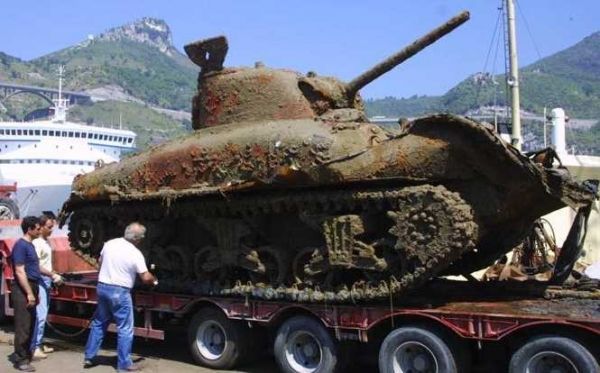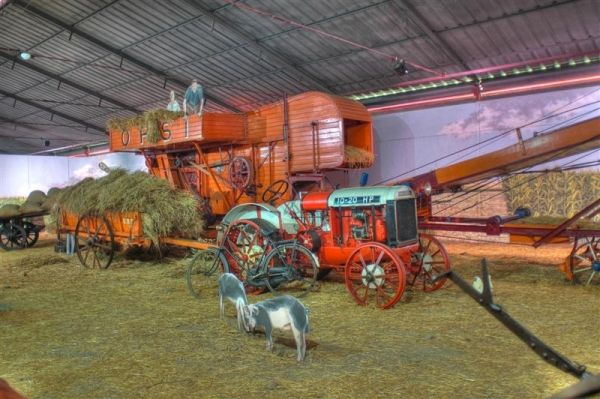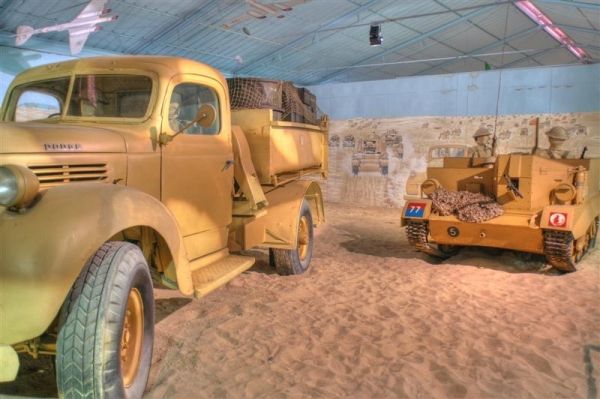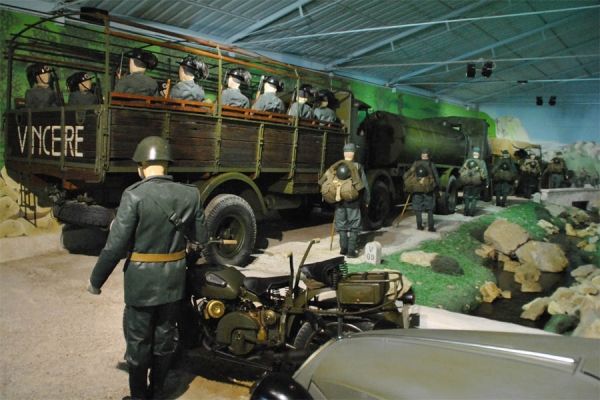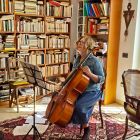Mariano De Pasquale, one of Italy’s leading rose-growers, died in 2006. Two years later, his family and staff erected his bronze statue in the grounds of the theme park he created in an off-the-track corner of the Pontine Plain, some 70 kms south of Rome, where it greets visitors who come to enjoy his huge collection of 20th-century memorabilia.
The museum park of Piana delle Orme (literally, Plain of Footprints) covers some 25,000 sqm and is divided into 12 pavilions, tucked away up a farm road leading off from km 73.200 on the Via Appia (the SS N 7 on the map) at the hamlet of Borgo Faiti. Not nearly as well known as it deserves, it offers a whole-day experience that the entire family can enjoy.
De Pasquale was a passionate collector of all kinds of objects, from the smallest clockwork toy to a vintage Bulldog tractor and a world war two Jeep given him in lieu of payment for a consignment of flowers. The entire collection contains close on 50,000 items, including 300 tractors, 1,000 working machines, farm carts, harvesters and hundreds of agricultural engines and tools, as well as 300 military vehicles and thousands of pieces of wartime equipment.
In addition, a couple of pavilions are dedicated to documenting life on the land during the first half of the last century and the draining of the Pontine marshes in the 1930s. The exhibits are staged like film sets with faithfully-reconstructed scenes of daily life, complete with costumed figurines of farm labourers, animals, straw-thatched huts, wine cellars and barns. And there’s a special additional touch – you can smell the odour of the must while you watch the wine pressing, while the fragrance of fresh baked bread wafts round the bread ovens.
Explanatory panels and sound commentaries in English, as well as Italian, illustrate the appalling living conditions of the indigent dwellers of the malaria-ridden swamps that once stretched from Velletri to Terracina pior to the vast land reclamation operation that transformed the area into lush farmland. They document the heroic struggle of a group of volunteer teachers and reformers known as la Compagnia dell’Alfabeto (the Company of the Alphabet), who braved mud and malaria to combat wide- spread illiteracy in the marsh population, and the efforts made by the state to eradicate the disease (mal’arialiterally means “bad air”) by distributing quinine (the cure the peasants used was drinking wine and eating live frogs).
Next, you are shown the workers digging the drainage canals to reclaim the land and the arrival of the first settlers, sent by Mussolini from Veneto. The various villages, or “borghi”, in fact, bear place names from northern Italy – Borgo Grappa, Borgo Piave, and so on.
Crossing over to the pavilions opposite you enter the war zone, with an impressive array of 1940s Jeeps, armoured cars, tanks, trucks, motorbikes with side-cars and all kinds of combat paraphernalia. You can also see the Sherman M1-A1 tank which Piana delle Orme staff jokingly call “the Oscar winner” because it stole the last scene in Roberto Benigni’s Oscar-winning film La Vita è Bella. Another film The English Patient also cast many of the vehicles from the Piana delle Orme collection and they are regularly hired out for Italian TV and cinema war films. The most moving pavilions recreate the historic events of the Allied landing at Anzio and the bombing of the Benedictine abbey of Montecassino.
The scenes show soldiers crouching in the mire-swamped trenches or struggling up slushy mule tracks, snipers firing from caves in the mountain-side and civilian families huddling in makeshift cover. A field hospital gathers in the wounded under a barrage of gunfire and exploding grenades. The Montecassino pavilion gives a sobering insight into the devastation war leaves behind. It contains a mountain of rubble, with the monastery bell and some fragments of carved marble columns the only evidence of the great abbey’s lost glory. Some of the museum’s most prestigious pieces are parked outside on the lawn. You can admire a real life Starfighter F-104S/ASA-M. By inserting a coin in the designated slot you can make the plane whir into action and point its nose up as if ready for take-off – a sure winner with the kids.
Nearby, you encounter Italy’s most famous steam engine, the locotender Gr835, a Fairchild EC-119G cargo, nicknamed the “Flying Wagon”, and the pride of the collection – a rare Sherman DD amphibian tank, known as the world war two American “secret weapon”, used in the 1944 Normandy landing. There are only two other of these vehicles in the world and this is the only one in working order. Sunk in the Gulf of Salerno, it was discovered by chance in 2000 by a group of divers. De Pasquale salvaged it from the seabed and had it cleaned and restored.
However, if all this seems a bit heavy-going, the pavilion dedicated to toys of yesteryear will delight young children (and their parents). And don’t miss the collectors’ market in the 1,700-sqm warehouse, offering hundreds of fascinating objects at bargain prices. Meals are available in the park’s Eucaliptus restaurant or the self-service Mensa del Contadino (farmer's canteen). There are also numerous picnic areas.
De Pasquale named his museum the Plain of Footprints, because that is exactly what he intended to leave behind him – an indelible footprint marking the history of the area and its people, and the tragedy of war fought on its soil.
Margaret Stenhouse
Piana delle Orme museum park is open in winter from 09.00-16.00 and in summer from 09.00-20.00 (the ticket office closes two hours earlier). For more info see www.pianadelleorme.it or tel. 0773258708 for special rates for school groups.



